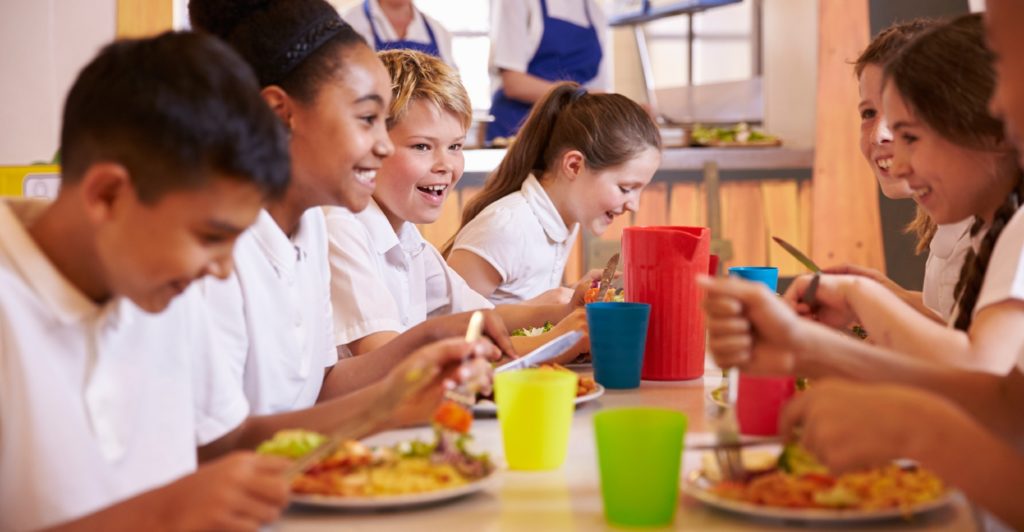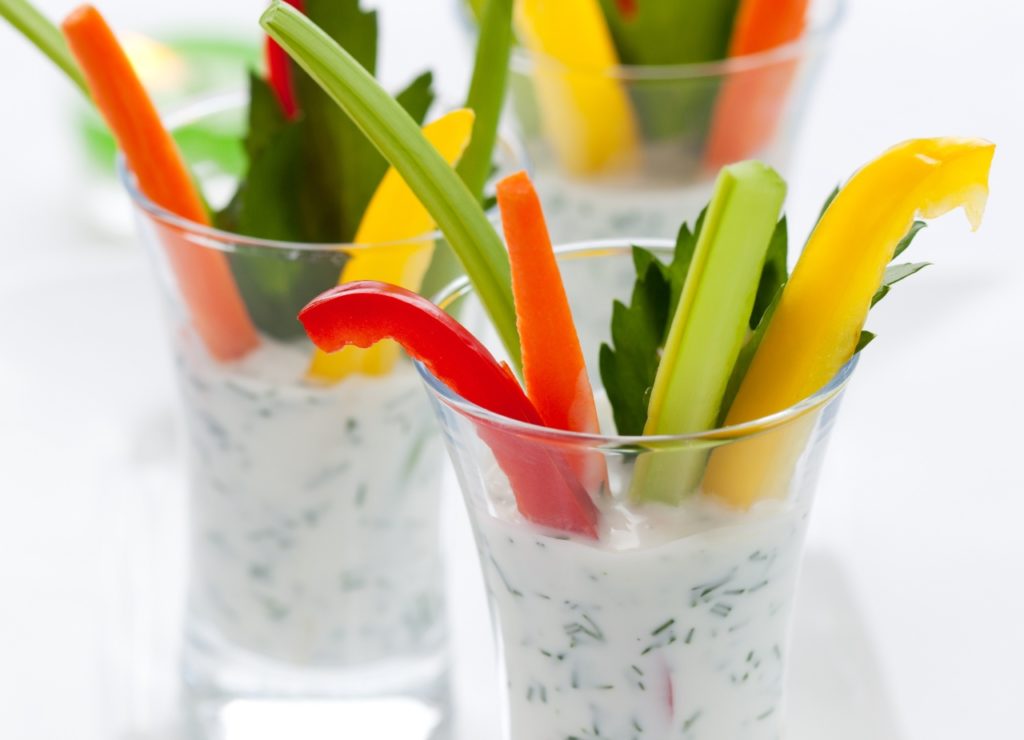13 ways to encourage fruits and vegetables in school lunchroom
Did you know that simple marketing and presentation strategies can affect the number of fruits and vegetables that students eat? Here are some Smarter Lunchroom strategies that encourage students to eat more fruits and vegetables:

Focus on Fruit
Offer at least two different kinds of fruit
Think beyond apples, bananas, and oranges. Smarter Lunchrooms expose students to a wide variety of fruits, including grapes, watermelon, mandarin oranges, peaches, berries, and kiwi. Fresh, frozen, dried, and canned are all equally nutritious.
Offer sliced or cut fruit
Students are more likely to eat fruit that is convenient and easy to eat. When schools slice the fruit, students eat up to two-thirds more!
Display mixed whole fruits in attractive bowls or baskets
Students take more fruit when a beautiful, appealing variety of colorful options is presented. Place fruit in colorful ceramic bowls, plastic mixing bowls, or woven baskets rather than stainless steel pans. Mix different whole fruits together such as apples with oranges, bananas with pears, peaches with plums, to emphasize variety.

Place fruit options in at least two locations, including right before point of sale
Increase the likelihood that students will see fruit options by placing them in two different locations. Try placing fruit on the salad bar, in a cooler, on a snack rack, and, of course, always beside the register.
Identify a featured fruit-of-the-day and label it with a creative, descriptive name
Featuring a fruit increases its visibility and makes it more attractive to students. Creative, descriptive names enhance taste expectations—if it looks delicious and sounds delicious, it must be delicious! Smarter Lunchrooms offer fruits such as orange squeezers, juicy grapes, slurpy watermelon, sweet tropical pineapples, sweet sugar berries, monkey phones (bananas), and snappy apples.
Taste test fruits at least once a year
Taste testing exposes kids to the smell, texture, and flavor of a new fruit. Kids need to be exposed to a food several times before deciding if they like it. Taste testing fruits prior to offering them creates satisfied customers and cuts down on waste.
Vary the Vegetables
Offer at least two kinds of vegetables
Kids are more likely to select and eat a vegetable when they have the power to choose from different options. More options also increase the chances that each child can find at least one vegetable they like. Make vegetable choices impossible to miss by using brightly colored trays, tongs, linens, or labels to add interest and visual appeal.
Offer vegetables on all service lines
Convenience matters! Students are far more likely to take a vegetable if it is within arms reach than if they have to travel to a second serving line or station to get it. If counter space is limited, consider making room in each cooler for veggie cups or bagged raw veggies. Offer vegetables at every service area so students can easily grab them and go.
Offer both hot and cold vegetables
When it comes to kids’ tastes, one size does not fit all. Some students like vegetables fresh and crunchy while others prefer them roasted or seasoned. A wide variety of appealing choices can increase sales, increase student satisfaction, and even prompt students to try new foods. Offer hot vegetables alongside entrees and provide cut, raw vegetables on the sald bar or along the service line. Another prime location for portioned cut vegetables is in a rack or cooler by the point of sale.

Pair cut, raw vegetables with a low-fat dip
Raw vegetables appeal to students for many reasons: they are easy to hold and eat, fun to dip, crunchy, cold, colorful, and sweet. Serve them with a pre-portioned low-fat dip such as ranch, hummus, or salsa. Add a colorful sign showing the items together, along with a fun, catchy slogan such as “Dip in! Veggie crunchers + hummus” or “Cucumber scoops <3 salsa.” Put hummus or dip in the bottom of a small cup and stand up veggie sticks in it.
Offer self-serve spices and seasonings
Let kids spice up lunch. A flavor station with herbs and spices allows students to personalize their meal and experiment with flavors. Flavor stations can be as simple as offering spieces at the end of the serving line or can go as far as providing a designated flavor station table in the cafeteria. Keep your spices and flavorings calorie and sodium free. Consider including lemon juice or slices, parsley flakes, garlic powder, cinnamon, chives, vinegar, and hot sauces. Go the extra mile and include labels with suggestions for what might go together: cinnamon on sweet potatoes or applesauce, oregano on cooked carrot medley, garlic powder on green beans, etc.
Identify a featured vegetable-of-the-day and label it with a creative, descriptive name
As with the featured fruit-of-the-day, a featured vegetable gets more visibility and is more attractive to students. Creative, descriptive names enhance taste expectations—if it looks delicious and sounds delicious, it must be delicious! Smarter Lunchrooms offer vegetables such as cool-as-a-cucumber slices, carrot crunchers, juicy cherry tomatoes, power peas, sweetie pie sweet potatoes, and protein-rich chickpeas.
Taste test vegetables at least once a year
Taste testing allows kids to take a bite of a vegetable they haven’t tried before without comitting to a whole serving. Even if they have tried the vegetable in the past, repeated exposure can help them decide whether or not they like it. Make an event of adding something new to the menu, and offer free vegetable tastings at least once a year.
The strategies listed here come from the Smarter Lunchrooms Movement, bringing evidence from the fields of economics, marketing, and psychology into the school cafeteria. These free or low-cost solutions nudge students to voluntarily select the healthiest food in the school lunchroom.
You might also like:
7 Ways marketing can help students make healthy choices in the school lunchroom
Topics: Healthy Eating, Schools
Subscribe for more
Want more ideas for healthy schools, workplaces, child care providers, and families? Subscribe to our blog for weekly tips delivered right to your inbox!
Get kids cooking to encourage healthy eating NEXT »
Offer fitness equipment to encourage physical activity at work
